Nazareth House, Great Crosby, Liverpool, Lancashire
In May, 1897, the Sisters of Nazareth were invited by Father Nugent to establish a Nazareth House in Liverpool, to provide accommodation for orphan and destitute children and for the elderly poor. A property was purchased on Liverpool Road, Great Crosby, to the north of Liverpool, and on 31 May1897, the first Mother Superior, Sister Agnes, took up residence.
At the outset, there were no beds and four were donated by the Sisters of the Good Shepherd Ford, together with other useful articles. The Sisters of St Paul, whose convent was also on Liverpool Road, delivered cooked meals until the house had its own cooker installed.
By 1898, the first van for collecting donations of food and clothing had been purchased a a cost of £58. On one occasion, the home received the gift of a cow.
The children taken in by the home were mainly girls although a few young boys were also accommodated. A nursery was set up for tiny babies and there was a section for new arrival to be medically checked for tuberculosis and other diseases before joining the other children.
On 14 July 1901, the foundation stone for a new building was laid by Bishop Whiteside. The sisters moved in on 23 December 1902 and an official opening took place on 28 June 1903. Around 3,000 people attended the event which featured a full choir plus a brass and strings orchestra provided by The Young Men's Society. The home received from men from local dockyards who built coke sheds and did gardening after finishing work. The dockers also raised money for a statue of St Joseph to be placed in the niche of the new building. In 1911, a new chapel was opened at the west of the new building.
The children taken in were primarily girls although a few young boys were also accommodated.
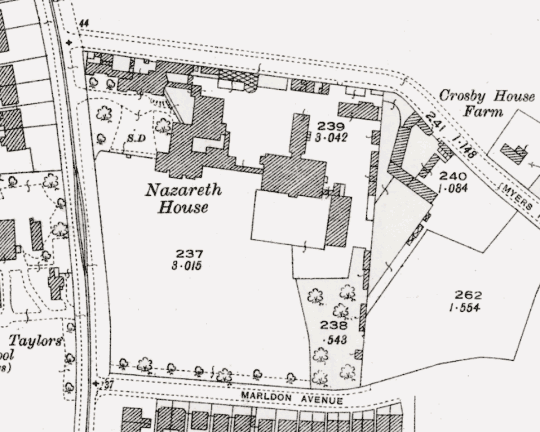 ``
``
Nazareth House site, Crosby , c.1925.
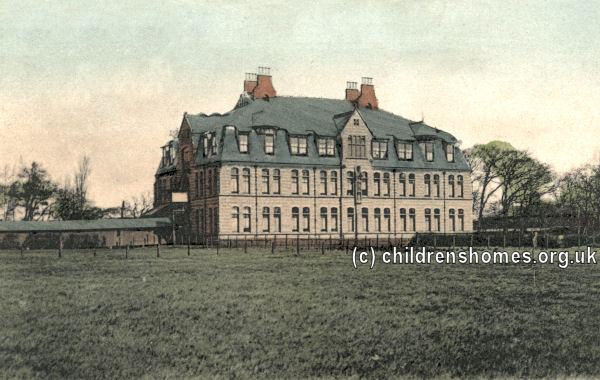
Nazareth House, Great Crosby, Liverpool, early 1900s, from the south-west. © Peter Higginbotham
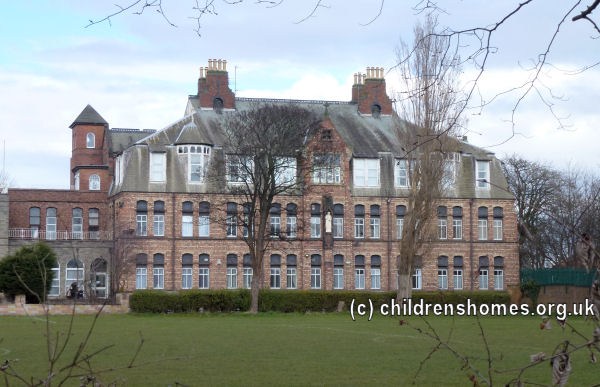
Nazareth House, Great Crosby, Liverpool, from the south-west, 2013. © Peter Higginbotham
For many years, the children's weekly treat was a Saturday afternoon walk in uniform and crocodile formation. On warm days, the walk would visit the seashore. The children had pennies to spend on sweets but were instructed 'not to take sweets up to the dormitory'.
By the 1950s, the children were attending local schools, having been previously taught in the home. They also became more involved in the local community, the boys joined the Boy Scouts and the girls the Legion of Mary.
In 1962, following a decline in the the numbers of children entering the home, forty of them were moved to the original house at the north-west of the grounds, which was by then known as the 'Villa'. At the same time, a new block, constructed in artificial stone, was erected between the main house and the chapel.
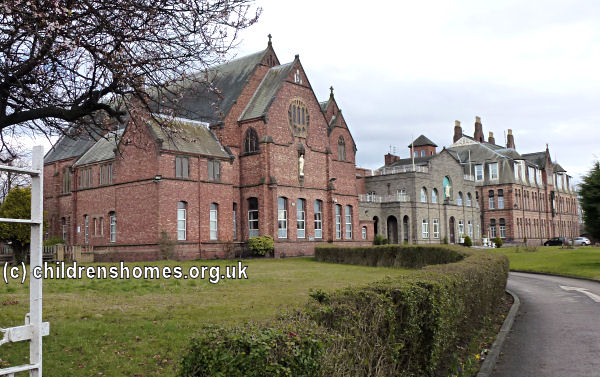
Nazareth House, Great Crosby, Liverpool, from the west, 2013. © Peter Higginbotham
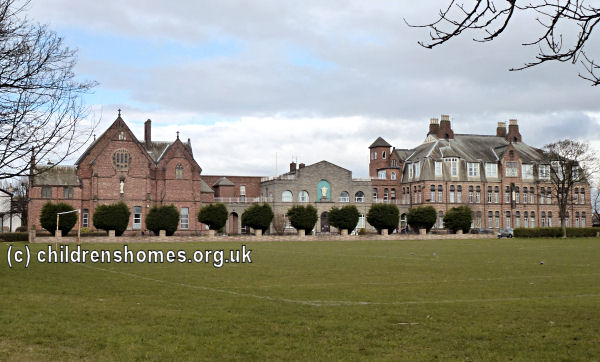
Nazareth House, Great Crosby, Liverpool, from the south-west, 2013. © Peter Higginbotham
By the 1980s, there were twenty-two children in the Villa, most of school age. There were also two 'Independence Flats' , where 16 to 18-year-olds could prepare for independent life. At this date, the children holidayed in Wales for two weeks each year.
By 1997, the children's section was being run by the Nugent Care Society. The sisters continue to provide residential care for the elderly.
Records
Note: many repositories impose a closure period of up to 100 years for records identifying individuals. Before travelling a long distance, always check that the records you want to consult will be available.
- Sisters of Nazareth Archive, Sisters of Nazareth Archive, Nazareth House, 169-175 Hammersmith Road, London W6 8DB. The archivist is Christine Hughes. The archive contains material from the very beginnings of the order in the 1850s up until the present day. The archive is not open to the public and does not have facilities for personal searchers, although exceptions can be made for Sisters and for academic researchers. Enquiries are welcomed by post only for privacy and confidentiality reasons and replies are by also letter. There is no fee for dealing with enquiries, although donations to the Sisters are appreciated.
Bibliography
- Fothergill, Anne Memoirs of a Nazareth House Girl (2013, Quoin Publishing). Memories of the Middlesbrough Nazareth House.
- Gray-Wilson, Shirley It isn't Always Raining: Children in Care, 1939-1948 (2000). Life in the Carlisle and Newcastle Nazareth Houses.
- Kelly, Judith Rock Me Gently: A Memoir Of A Convent Childhood (2006, Bloomsbury). A memoir of life at Bexhill Nazareth House in the early 1950s. The factual veracity of this book has been challenged, and charges of plagiarism levelled against the author (e.g. see Catholic Herald 2/9/2005). The introduction to the current edition of the book acknowledges some of these criticisms.
- Reilley, Frances Suffer The Little Children: The True Story of An Abused Convent Upbringing (2009, Orion). Memories of the Belfast Nazareth House.
- Nuns 'abused hundreds of children' (Guardian article 16/8/1998)
- Sisters of No Mercy (Guardian article 1/4/2003)
- Compensation for care homes abuse (BBC News item 15/8/2006)
- Sisters of Nazareth become second Catholic order to admit to child abuse (Guardian article 14/1/2014)
- Children at Derry care homes were made to eat vomit, inquiry told (Guardian article 27/1/2014)
- A Time for Penance? (BBC Scotland 'Frontline' TV feature on abuse in Scottish Nazareth Houses)
Links
Except where indicated, this page () © Peter Higginbotham. Contents may not be reproduced without permission.


